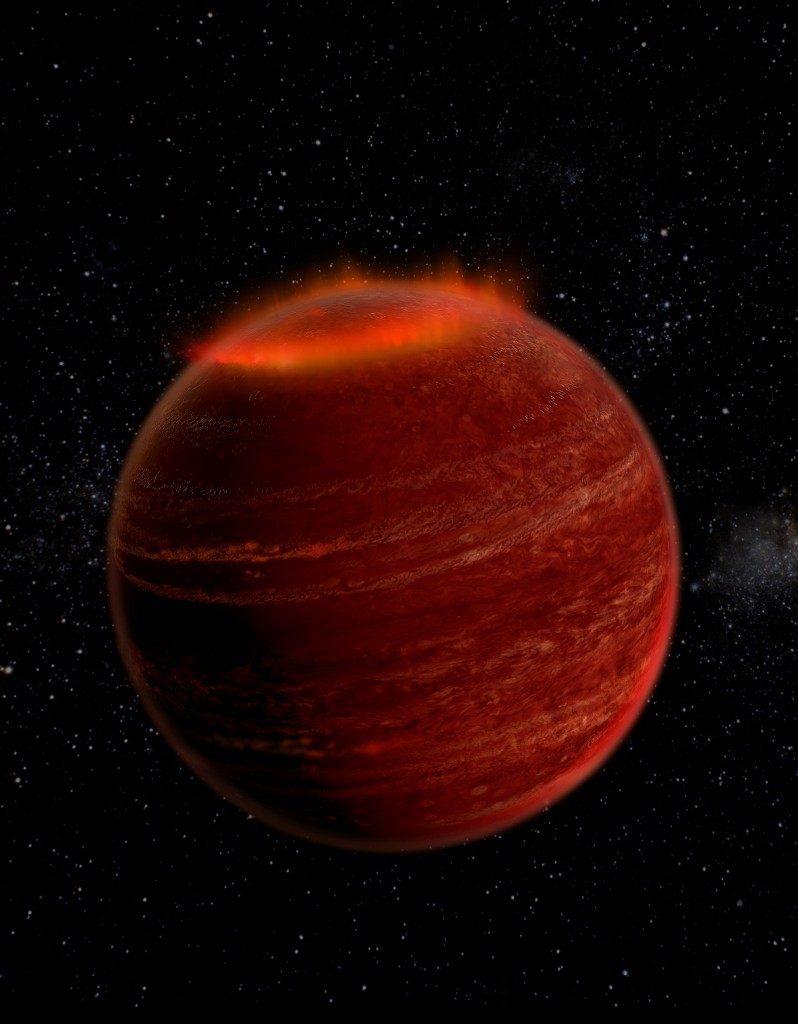FOUND: Aurorae 1 Million Times Brighter Than Any on Earth
 An artist’s impression of the aurora (Image: Chuck Carter and Gregg Hallinan/Caltech)
An artist’s impression of the aurora (Image: Chuck Carter and Gregg Hallinan/Caltech)
Eighteen and a half light years away from Earth, there’s an object that we call LSR J1835 + 3259. It’s the type of body astronomers call a brown dwarf, or a failed star—more massive than Jupiter, but not quite big enough to be a star. The strange thing is: it’s throwing off radio waves that we can measure here on Earth.
That surprised scientists, and they started looking for a cause. Now, they’ve concluded in a Nature paper that the signals from the failed star come from aurorae—the sort of celestial display that’s known, on this planet, as the northern or southern lights.
Aurorae are connected to planets’ magnetic fields: they occur when electrons stream through a planet’s atmosphere and run into other molecules. These collisions give off bright, colorful light.
In our solar system, Jupiter’s aurorae are the strongest. But the ones the scientists detected at the brown dwarf are even more extravagant–about 1 million times brighter than aurorae here on Earth.
“If you were to somehow stand on the brown dwarf’s surface and survive—the surface gravity is maybe 100 times more intense than Earth’s, and the temperature is several hundred to several thousand degrees—you’d see a beautiful bright-red aurora,” one of the scientists told Space.com.
Bonus finds: Possible MH370 debris, a cat that survived underwater for an hour, an amazing peacock spider, a drunk badger
Every day, we highlight one newly lost or found object, curiosity or wonder. Discover something unusual or amazing? Tell us about it! Send your finds to sarah.laskow@atlasobscura.com.









Follow us on Twitter to get the latest on the world's hidden wonders.
Like us on Facebook to get the latest on the world's hidden wonders.
Follow us on Twitter Like us on Facebook